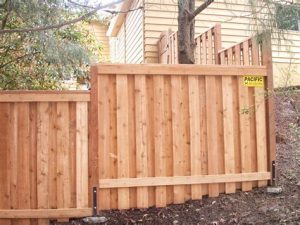Explore essential insights on local regulations, permit consequences, approval processes, and professional guidance to ensure safety and compliance in your applications.When it comes to enhancing your property with a fence, obtaining the necessary permits is a crucial step that should never be overlooked. While it may seem like just another piece of red tape, understanding local regulations and the approval process can save you from potential legal headaches down the line. Failure to secure a permit can lead to costly consequences, including fines or forced removal of your fence. This blog post will guide you through the importance of acquiring a permit, outlining the necessary requirements and the benefits of seeking professional guidance during the application process. Furthermore, we’ll discuss how proper permitting not only ensures compliance but also contributes to the safety and aesthetics of your property. Whether you’re planning a simple backyard boundary or an elaborate landscape feature, understanding these aspects is vital for a successful fencing project.
Understanding local regulations
Every homeowner embarking on a fence installation project must first be aware of the local regulations governing such structures. These regulations vary significantly between municipalities and can dictate the type, height, and placement of your fence. For instance, some areas may have height restrictions, while others might require a specific *setback* from property lines.
Additionally, local regulations may require homeowners to obtain a building permit before they begin construction. Neglecting to comply with these requirements can lead to unwanted fines and complications. According to most city ordinances, it’s essential to *check with your local zoning office* to understand the legal stipulations applicable to your property.
Understanding these local regulations is not just about legality; it’s about ensuring the long-term integrity and acceptance of your property within the community. Therefore, committing time to familiarize yourself with the rules ensures your new fence complements the existing neighborhood aesthetics while adhering to all requirements.
Consequences of not obtaining a permit
Obtaining a permit for your fence may seem like a tedious task, but the consequences of not obtaining a permit can be far more burdensome. Many homeowners underestimate the legal implications of building a fence without the proper approvals. Ignoring these requirements can lead to significant challenges down the road.
One of the most immediate consequences is the threat of fines and penalties. Local authorities are empowered to impose financial repercussions on those who fail to comply with zoning laws. These fines can accumulate quickly, resulting in a substantial amount that could have easily been avoided by acquiring the necessary permits.
Additionally, building a fence without a permit can lead to the requirement to remove or alter the fence after it has been built. This not only wastes time and money but can also create disputes with neighbors if the fence violates property lines.
Approval process and requirements
Obtaining a permit for your fence is a crucial step that ensures compliance with local laws and regulations. The approval process typically involves several stages that require careful attention to detail and adherence to established guidelines. Understanding these requirements can save you time, money, and potential legal troubles.
| Step | Description |
|---|---|
| 1. Research Local Regulations | Before starting your fence project, check with your local building department about zoning laws, fence height restrictions, and property line regulations. |
| 2. Document Preparation | Prepare all necessary documents, such as site plans and detailed drawings of the proposed fence. Ensure that these documents follow your local guidelines. |
| 3. Submit Application | Complete the permit application form and submit it along with the required documents to your local authorities. |
| 4. Review Process | Your application will be reviewed for compliance. This may take several days or even weeks, depending on your location. |
| 5. Approval or Denial | After review, you will receive a notification regarding the approval or denial of your permit. If denied, the notification will include reasons for the denial. |
Each jurisdiction may have its unique requirements and timelines. Therefore, it’s essential to communicate with local authorities early in the process to clarify what is needed. Missing a crucial requirement not only delays the project but could also lead to penalties.
Professional guidance for permit applications
When it comes to navigating the complexities of obtaining a permit for your fence, seeking professional guidance can be invaluable. Engaging the services of experts who understand the local regulations and requirements can save you time, effort, and potential legal issues down the line.
Permit applications often require a wealth of documentation, including site plans, property surveys, and detailed project descriptions. Professionals familiar with the permit process can help you gather the necessary information and ensure that all documents meet the local standards. This preparedness not only smooths the approval process but also strengthens your application.
Moreover, professionals can provide insights into common pitfalls that homeowners face when applying for permits. By leveraging their experience, you can avoid mistakes that could lead to delays or even rejections. Their expertise will guide you through every step, making the process much less daunting. Remember, investing in professional guidance for your permit application can ultimately lead to a successful and timely outcome.
Ensuring safety and compliance with permits
When it comes to installing a fence, ensuring safety and compliance with permits is crucial. Obtaining the necessary permits not only adheres to local regulations but also guarantees that the structure is built safely. A fence that complies with zoning laws can help prevent legal issues and fines down the line, contributing to a stress-free installation process.
To maintain safety and compliance, it’s essential to thoroughly understand the local regulations that apply to fencing. Each municipality has different requirements regarding fence height, materials, and placement. For instance, some areas may prohibit tall fences that obstruct sightlines or certain materials that may not withstand local weather conditions. By familiarizing yourself with these rules, you ensure that your fence will be safe and compliant.
Furthermore, having the right permits in place demonstrates a commitment to responsible building practices. This not only assures your neighbors and community that the installation meets safety standards but also protects your investment in the property.
Frequently Asked Questions
Why is it necessary to obtain a permit for a fence?
Obtaining a permit ensures compliance with local building codes and regulations, helps maintain property values, and safeguards against legal disputes with neighbors.
What are the potential consequences of not getting a fence permit?
Failing to obtain a permit can lead to fines, mandated removal of the fence, or legal action from neighbors if the fence violates property lines or building codes.
How can I find out what the local regulations are for fencing?
You can check with your local building department or zoning office, visit their website, or review your municipality’s codes for specific information on fencing regulations.
What information is typically required when applying for a fence permit?
Applications usually require details such as the fence’s height, materials, location, and any site plans showing property lines and adjacent structures.
Are there specific types of fences that do not require a permit?
Some municipalities may allow for certain types of temporary fences or small decorative fences to be built without a permit, but this varies greatly by location.
How long does it usually take to get a permit for a fence?
The timeframe can vary; however, it typically takes anywhere from a few days to several weeks depending on the local government’s workload and your specific project’s complexity.
Can I get help with the permit application process?
Yes, many local building departments provide guidance on the application process, and hiring a contractor can also help navigate the requirements for obtaining the permit.




